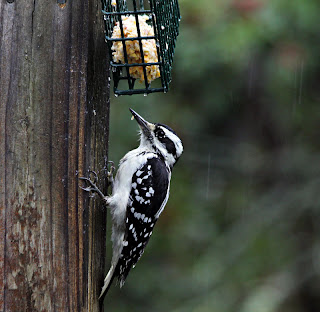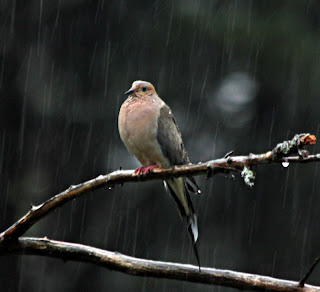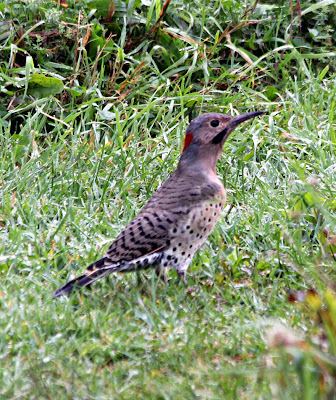Living in a rural area in the path of a hurricane (or tropical storm) with hundreds of miles of power lines and thousands of trees, combined with heavy rain and wind, make losing power almost a certainty. Our power has already flickered so all the clocks are blinking and showing the wrong time – but we’ll find that manual for setting the oven stove yet. Once electricity goes, we lose the water pump, the stove and oven, and the refrigerator and lights. But we have a nice backup plan sitting in the yard, our Airstream travel trailer.
 So yesterday, in pre-storm preparation, I added water to the ‘stream for ballast, checked the gas stove, started the gas refrigerator, and checked the battery charge. The pads are down and it should ride out the storm nicely — and allow us to make coffee in the morning.
So yesterday, in pre-storm preparation, I added water to the ‘stream for ballast, checked the gas stove, started the gas refrigerator, and checked the battery charge. The pads are down and it should ride out the storm nicely — and allow us to make coffee in the morning.
When I walked the dog early this morning, the trails were already flooding in places, but the birds were singing in the light steady rain.
They have been stoking up on thistle seed and sunflower chips all morning and in between downpours, a couple of hummers tanked up at their feeder. We’ve had soggy Chickadees, Song Sparrows, American Goldfinches, and Hairy Woodpeckers and a Downy. A placid Mourning Dove has sat through squalls in the crabapple tree, watching it all.
 |
| Hey I’m wet and molting — ditch that camera! |
 |
| Wet but hungry Hairy Woodpecker |
 |
| Momma Hummer tanks up in the rain |
 |
| Man, it’s wet up here. How about some room service? |
The birding blogs are full of hurricane-related activity, starting with the wonderful story of the radio-equipped Whimbrell who made it through a few days ago. Birders are looking forward to post-hurricane birding — here’s an article from Connecticut and one from Albany.
Here’s what Brian Pfeiffer, one of our top birders just wrote:
“Hurricane Irene’s passage through Vermont is an opportunity for rare birds. Increasing winds today may deposit odd birds nearly anywhere in the state. Please use common sense out there; this is a dangerous storm. We need not lose anyone to high water, falling trees or downed power lines. Common sense is a far better thing than a Sooty Tern.
But do take note of what may be flying over or floating in large waterbodies. The Connecticut River will also be worth investigating. So will flooded fields for that matter. Monday morning may also be a fine time to search for the rare stuff. The hurricane of 1938 brought Cory’s Shearwater (Wheelock), Greater Shearwater (Rutland), Leach’s Storm-Petrel (Barre, Norwich, Rutland, St. Johnsbury), White-tailed Tropicbird (North Danville and Woodstock) and other delights to Vermont that particular September. When your neighbors call to report “a strange bird” in the yard, take it seriously. Go investigate if it’s safe to do so…”
So, today’s a nice day to curl up with a birding book and think about possible new birds in your area.
I plan to check our nearby reservoirs tomorrow to check for wind-blown vagrant birds. Be safe and tonight, most of us can hum, “Goodnight Irene.”
about three obsessed birders who independently decide to do a big year birdwatching. That is, they try to see as many birds as possible in mainland US and Canada in a calendar year.










 telescoping hiking poles or simply a thick stick picked up along the trail. A pole or stick can assist with a wide range of backcountry situations from crossing a beaver dam to descending a mountain. This extra support becomes even more important as one gets older when the knee and hip joints need relief from the stress caused from hours of hiking over arduous terrain.
telescoping hiking poles or simply a thick stick picked up along the trail. A pole or stick can assist with a wide range of backcountry situations from crossing a beaver dam to descending a mountain. This extra support becomes even more important as one gets older when the knee and hip joints need relief from the stress caused from hours of hiking over arduous terrain.




